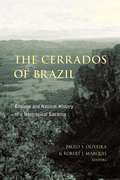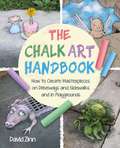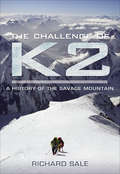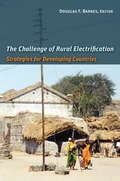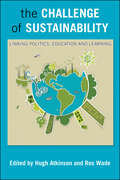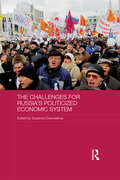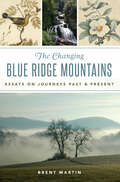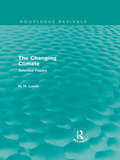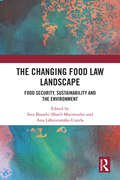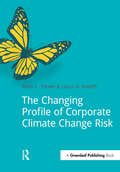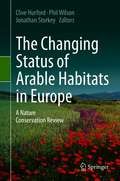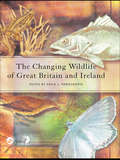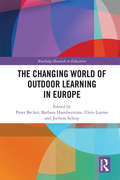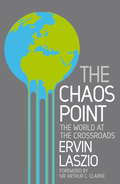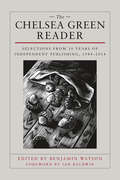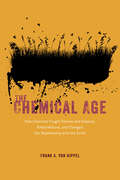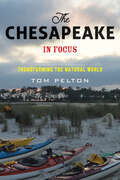- Table View
- List View
The Caves Beyond: The Story of the Floyd Collins' Crystal Cave Exploration
by Roger W. Brucker Joe Lawrence Jr.THE CAVES BEYOND by Joe Lawrence, Jr. and Roger W. Brucker The Caves Beyond is the classic American caving adventure story. There is no other caving book like it. First published in 1955 in an edition of 10,000 copies, the book was out of print soon afterwards. It is now known among caving enthusiasts as the most stolen book there ever was. You will see it listed in most library catalogs, but will be lucky to find a copy on a library shelf. In February, 1954, under the direction of Joe Lawrence, the National Speleological Society sent the largest, most highly organized, and best-equipped expedition in the history of American cave exploration into Floyd Collins' Crystal Cave, Kentucky. The Caves Beyond is the official NSS account of that expedition. In the short view, the C-3 (Collins' Crystal Cave) expedition was not much of a success, but in the long view it was a major turning point in American speleology. Three cavers- Phil Smith, Roger Brucker, and Roger McClure, emerged from the C-3 expedition to organize the Central Ohio Grotto Flint Ridge Reconnaissance, and then the Cave Research Foundation, to carry on the exploration. Guided by Jim Dyer, Dr. Pohl, and Bill Austin, they molded the most concentrated speleological effort ever undertaken by a large group. Planning for the C-3 expedition had begun in 1952; 20 years later, with no letup in intensity, the big connection between the Flint Ridge Cave System and Mammoth Cave was made. The story told in The Caves Beyond culminated in the integration of the longest cave in the world-the Flint Mammoth Cave System. Roger Brucker's new introduction to the long-awaited reprint edition reveal a number of old secrets, including stories of the politics behind the C-3 expedition and of how the book came to be written in an attic in Brooklyn in two weeks' time. There is also a detailed index, which the first edition lacked.
The Central Appalachians: Mountains of the Chesapeake
by Mark Hendricks--The book will be the first to specialize on the Appalachians of the Chesapeake Bay Watershed. --Interspersed amongst seasonal portfolios of images will be stories of characters- scientists, conservationists and a thru hiker on the Appalachian Trail. No other project on these ancient mountains has used traditional photography as well as camera trapping, underwater photography, and drones to attempt to tell a complete story. --Tourism is booming in the mountains and this could be an important compilation for the four states that it documents
The Cerrados of Brazil: Ecology and Natural History of a Neotropical Savanna
by Paulo Oliveira Robert MarquisWhile the imperiled Brazilian rainforest has been the focus of considerable international media attention and conservation efforts, the massive grasslands of Brazil—known as the cerrados—which cover roughly a quarter of its land surface and are among the most threatened regions in South America, have received little notice. This book brings together leading researchers on the area to produce the first detailed account in English of the natural history and ecology of the cerrado/savanna ecosystem. Given their extent and threatened status, the richness of their flora and fauna, and the lack of familiarity with their unique ecology at the international level, the cerrados are badly in need of this important and timely work.
The Chagos Archipelago: A Biological Biography
by Charles SheppardThis book is the story of the natural history of Chagos Archipelago, and of the efforts of many to get it recognized as an important and protected wildlife reserve. Exploring its immense natural riches and biodiversity, both on islands and in the marine environment, this book addresses competing claims to its resources, its politics, and the desire of some commercial and political parties to exploit the area. It is about the fight to conserve a wonderland of biodiversity and obtain its protection from exploitation, especially of its reefs and other marine life. This book shows the importance of the Chagos Archipelago and why so much research was done there. Rather than being a typical research book, this work presents research in a narrative form and describes the now substantial Government, UN, and legal interest in the archipelago since the UK was told to ‘decolonise’ it. It is also the story of our planet in miniature: the archipelago encapsulates much of the world’s conservation tribulations in a way we can much more easily understand. This narrative will explore the difficulties faced by the Chagos Archipelago, including displaced people, old and derelict industries (coconut in this case), the military, politics, rich and untouched ecosystems that some want to exploit, ruined habitats on land, climate change, and territorial claims. It will examine how all of these factors have affected the natural history, biodiversity, and conservation of the archipelago. With beautiful photography of the Chagos Archipelago coral reefs and islands, as well as graphs indicating their findings, this book offers professionals, researchers, academics, and students in conservation and biodiversity an insight into one of the world’s most diverse ecosystems. It is also accessible for non‑academic readers with an interest in climate change, biodiversity, and the importance of conservation.
The Chalk Art Handbook: How to Create Masterpieces on Driveways and Sidewalks and in Playgrounds
by David ZinnA comprehensive guide for chalk art creators! With so many searching for ways to have fun at home in the midst of the Covid-19 pandemic, chalk art has become a great way to do so while enjoying some fresh air. The Chalk Art Handbook offers budding artists a review of the tools involved, as well as tips and tricks to creating an array of sidewalk creatures. Artist David Zinn, whose work has been used as inspiration for elementary and middle school art lessons, offers step-by-step guidance on how to make chalk art come to life and advice on specific techniques such as smudging, perspective, and 3-D illusions. He also encourages artists to work outside the box with details on how to best incorporate concrete specks and natural holes or cracks in the ground into their artwork. The Chalk Art Handbook even includes bonus activities to keep everyone drawing happily both indoors and outdoors. The perfect gift for those looking for hours of outdoor fun!
The Challenge for Energy Justice: Correcting Human Rights Abuses
by Raphael J HeffronWritten by one of the world’s leading scholars in the field, this book provides a unique perspective on the connections between energy justice and human rights. Taking an interdisciplinary approach, the author offers an accessible discussion about the implementation of energy justice in practice. The book explores the rise of justice issues in the energy sector, the interdisciplinary nature of energy justice, the economics of energy justice and provides a practical case study on distributive justice. The penultimate chapter focuses on human rights and energy justice in a world first, and explores the topic from the perspective of the opportunity of last resort. This ‘opportunity of last resort’ is the national courts and is the place where societies can seek to have justice enforced through a variety of human rights being protected. Finally, energy justice risks are highlighted alongside the author’s proposed framework for the next generation of energy justice scholars.
The Challenge of Climate Change: Which Way Now?
by Daniel P. Perlmutter Robert L. RothsteinGlobal warming and climate change present complex interlocking issues of public policy, multilateral negotiation, and technological advancement. This book explores both the problems and the opportunities presented by international agreements, and examines the technological developments and policy goals that can be pursued to effect the changes necessary. Specific steps are proposed in the form of a list of priorities. This book represents a cooperative enterprise between two authors of different backgrounds - engineering and international relations - and is directed to an educated but non-professional lay audience without any formal training in either science or international relations. The points of view of negotiators from both developed and developing nations are presented and compared. Each topic is presented from both technical and policy perspectives as a means to evaluate the variety of proposals that have been offered as remedies to global warming. The text is supported by illustrations and tables where appropriate, including a list of References at the end of each chapter.
The Challenge of K2: A History of the Savage Mountain
by Richard SaleK2 is a legend - one of the most demanding mountaineering challenges in the world and one of the most treacherous. Extreme, unpredictable weather and the acutely difficult climbing conditions test the technique, endurance and psychological strength of the most experienced mountaineers to the limit and often beyond. Many of the men and women who have sought to reach the summit have failed, often with tragic consequences - over 70 of them have died or disappeared. Yet this, the second highest mountain on Earth, continues to exercise for the worlds top mountaineers a special, and all too often lethal attraction. Richard Sales fascinating new book traces the climbing history of K2 over the last 150 years, he shows in graphic detail how it acquired this awesome reputation: it was during the first serious attempts on the summit in the 1930s and 1950s that K2 became known as the Savage Mountain.
The Challenge of Rural Electrification: Strategies for Developing Countries
by Douglas F. BarnesDouglas Barnes and his team of development experts provide an essential guide that can help improve the quality of life to the estimated 1.6 billion rural people in the world who are without electricity. The difficulties in bringing electricity to rural areas are formidable: Low population densities result in high capital and operating costs. Consumers are often poor, and their electricity consumption is low. Politicians interfere with the planning and operations of programs, insisting on favored constituents. Yet, as Barnes and his contributors demonstrate, many countries have overcome these obstacles. The Challenge of Rural Electrification provides lessons from successful programs in Bangladesh, Chile, China, Costa Rica, Mexico, the Philippines, Thailand, and Tunisia, as well as Ireland and the United States. These insights are presented in a format that should be accessible to a broad range of policymakers, development professionals, and community advocates. Barnes and his contributors do not provide a single formula for bringing electricity to rural areas. They do not recommend a specific set of institutional arrangements for the participation of public sector companies, cooperatives, and private firms. They argue instead that successful programs follow a flexible, but still well-defined set of principles: a financially viable plan that clearly accounts for any subsidies; a cooperative relationship between electricity providers and local communities; and an operational separation from day-to-day government and politics.
The Challenge of Sustainability: Linking Politics, Education and Learning
by Hugh Atkinson and Ros WadeThis timely and accessible book explores the links between politics, learning and sustainability. Its central focus is the future of people and the planet itself. The challenges that we face in combatting climate change and building a more sustainable world are complex and the book argues that if we are to successfully meet these challenges we need a fundamental change in the way we do politics and economics, embedding a lifelong commitment to sustainability in all learning. We have no option but to make things work for the better. After all, planet earth is the only home we have! The book will be important reading for academics and students in a variety of related subjects, including politics, public policy, education, sustainable development, geography, media, international relations and development studies. It will also be a valuable resource for NGOs and policy makers.
The Challenge of the Sea
by Arthur C. ClarkeWhile tremendous strides toward the conquest of space occupy most of today's headlines, scientists are also exploring the vast secret recesses of the sea. Clarke takes us beneath the sea...
The Challenges for Russia's Politicized Economic System (Routledge Contemporary Russia and Eastern Europe Series)
by Susanne OxenstiernaDuring the early 2000s the market liberalization reforms to the Russian economy, begun in the 1990s, were consolidated. But since the mid 2000s economic policy has moved into a new phase, characterized by more state intervention with less efficiency and more structural problems. Corruption, weak competitiveness, heavy dependency on energy exports, an unbalanced labour market, and unequal regional development are trends that have arisen and which, this book argues, will worsen unless the government changes direction. The book provides an in-depth analysis of the current Russian economic system, highlighting especially structural and institutional defects, and areas where political considerations are causing distortions, and puts forward proposals on how the present situation could be remedied.
The Changing Arctic Environment
by David P. StoneThis accessible and engagingly written book describes how national and international scientific monitoring programmes brought to light our present understanding of Arctic environmental change, and how these research results were successfully used to achieve international legal actions to lessen some of the environmental impacts. David P. Stone was intimately involved in many of these scientific and political activities. He tells a powerful story, using the metaphor of the 'Arctic Messenger' - an imaginary being warning us all of the folly of ignoring Arctic environmental change. This book will be of great interest to anyone concerned about the fate of the Arctic, including lifelong learners interested in the Arctic and the natural environment generally; students studying environmental science and policy; researchers of circumpolar studies, indigenous peoples, national and international environmental management, and environmental law; and policymakers and industry professionals looking to protect (or exploit) Arctic resources.
The Changing Blue Ridge Mountains: Essays on Journeys Past and Present (Natural History)
by Brent MartinExplore this section of the Appalachians in these essays examining its history, its wilderness, and what change means for its future.In the eighteenth century, naturalist and artist William Bartram traveled in the Blue Ridge Mountains and spent time documenting both plant life and the customs of the Middle Town Cherokees. Since that time, men and women like Bartram have journeyed through Western North Carolina&’s wildest and most remote places and written about their experiences. The essays in this volume compare the present day to those historical journeys and explore the idea of wilderness and what change means for the future of the people and the species who live in the mountains. Join local writer and guide Brent Martin on a journey through this incredible landscape.&“With unflinching candor, Brent Martin celebrates the heartbreaking beauty of Appalachia. He wrings out every sensory and emotional detail in these passionate, probing essays that explore the wild within. These aren&’t lyrical paeans to nature; they are gritty, gutsy journeys into the rugged, remote landscapes of the human heart. Immersed in mountain tradition, culture, and community, he wanders deep and alone into the wild to find what remains. Martin&’s powerful, masterful writing shines with real, hard-earned hope.&” —Will Harlan, author of the New York Times bestseller Untamed: The Wildest Woman in America &“If you love the Southern Appalachians and Wendell Berry and Annie Dillard and Gary Snyder, read this beautifully written and deeply thought-provoking book.&” —Charles Frazier, author of the New York Times bestseller Cold Mountain&“A thoughtful and thought-provoking collection of essays from one of Appalachia&’s staunchest proponents of wilderness and one of its most devoted writers. Brent Martin is a preeminent naturalist and a scholar of the history of his place. This book is deeply personal, highly instructive, far-reaching.&” —Janisse Ray, author of Ecology of a Cracker Childhood&“A loving a troubling portrait of the southern Appalachians—the rich history and complexity of ecosystems alongside the damage we&’ve wrought on them.&” —Catherine Reid, author of Falling into Place: An Intimate Geography of Home
The Changing Climate: Selected Papers (Routledge Revivals: A History of Climate Changes)
by H. H. LambFirst published in 1966 these collected papers, written by the distinguished and visionary climatologist Hubert H. Lamb, describe how climates come about and give a history of climatic changes from the last ice-age to the 1960s.
The Changing Food Law Landscape: Food Security, Sustainability and the Environment
by Anu Lähteenmäki-Uutela Siva Barathi Sharl MarimuthuThis book analyses the current debates within food system governance, covering different aspects of food systems (from production to consumption) as well as different fields of law (from human rights law to environmental law). Recognizing that the law, in interacting with multiple disciplines, plays a major role in setting binding targets for sustainable innovation and business transformation, it brings together contributors from a wide range of professions, including agriculture, law, and business to examine the dimensions of food systems and the challenges in transforming them.The contributors to this book examine some of the most significant aspects of food law and regulation, including the effects of global warming, intellectual property rights, and human rights, as well as local and international viewpoints on food safety, information sharing, and systems transformation. They consider the history and present challenges of food production, the different approaches to addressing the issues faced, and the factors of human biology, psychology, cultural norms and religion that shape our food environments. The analysis of knowledge, values and institutions provides a holistic analysis of human food systems. Topics such as regenerative agriculture, novel and alternative foods, and health-enhancing foods are also covered.With its interdisciplinary approach, this book will interest researchers in agricultural law, food policy, environmental law, transdisciplinary food studies, and food science.
The Changing Land: Module F
by Leonard Bernstein Martin Schachter Alan Winkler Stanley WolfeIn this book, you will use a variety of science process skills to understand the facts and theories in earth science.
The Changing Profile of Corporate Climate Change Risk (Doshorts Ser.)
by Mark Trexler Laura KosloffThis book will help business executives to (1) rethink their perceptions of climate risk (2) evaluate whether their company is effectively positioned, and (3) make informed and prudent business decisions about climate change risk in an environment rife with policy uncertainty.Business risk associated with climate change is commonly assumed to be primarily policy driven. Many companies internalize the current stalemate over global climate policy into a perception that climate risk is no longer a critical issue. Business climate risks, however, include: Operational and Supply Chain (Physical) Risk, Brand Risk, Market-driven Structural Risk, Liability Risk.As national and global policy to materially reduce climate change is delayed, it is business-prudent to assume that the level of climate risk is increasing. Even if policy risk might seem lower today than a few years ago, political will can change quickly. Should physical impacts of climate change manifest in dramatic ways, for example, draconian climate policy is likely to follow quickly. These conditions create a complex and shifting business risk environment, and most companies either overlook or substantially underestimate key climate risks. How many companies, for example, are positioned for material climate change outcomes, whether physical or regulatory? Companies with little climate change exposure may not face much downside risk from taking a wait-and-see approach. For those with greater exposure, being "too late" to respond will mean costs and competitive impacts that could have been avoided. Being "too early," however, can mean being penalized later for actions that reduce a company’s emissions today, or competitive disadvantage from getting too far out in front of competitors.
The Changing Status of Arable Habitats in Europe: A Nature Conservation Review
by Clive Hurford Phil Wilson Jonathan StorkeyThis edited volume documents the current nature conservation status of arable habitats in Europe. Arable farming systems have evolved in the European landscape over more than ten thousand years and now occupy nearly 30% of the European land area. They support species that have life cycles closely synchronised with traditional cereal growing, many of which have experienced massive declines throughout Europe. For example, in Britain, of the 100 plant species exhibiting the greatest declines in the latter half of the 20th century, 47 were typical of arable land. Despite this the habitat and many of the species associated with it remains unprotected across much of Europe. The 22 chapters cover a range of topics, including: · Regional accounts describing the impact of changing agricultural practices on the arable flora;· The results of research and surveillance projects on the soil organisms, bryophyte flora, invertebrate fauna and pollinators of arable habitats;· The potential for designing multifunctional and resilient agricultural landscapes; The use of ex situ conservation to aid the reintroduction of rare arable plants;· Case studies illustrating how changing agricultural practices have impacted on bird populations in Europe; · The roles of remote sensing in monitoring agricultural systems; · How agri-environment schemes can help restore the biodiversity in arable habitats; and · A look forward at ways to help ensure the future security of the species associated with arable habitats. It is clear that the biodiversity of arable land throughout Europe has undergone major changes, particularly during the second half of the 20th century, and that these changes are continuing into the 21st century. We need to develop a deeper appreciation of farmland wildlife and its integration into farming systems to ensure its future security in a world where value is increasingly expressed in terms of material profit. This book is particularly relevant to practitioners, policy-makers and managers working in the fields of nature conservation, agri-environment schemes and land management, and to researchers working in the fields of conservation biology, terrestrial ecology, nature conservation, applied ecology, biodiversity, agriculture, agricultural ethics and environmental studies.
The Changing Wildlife of Great Britain and Ireland (Systematics Association Special Volumes Ser.)
by David L. HawksworthPeriodic comprehensive overviews of the status of the diverse organisms that make up wildlife are essential to determining trends, threats and future prospects. Just over 25 years ago, leading authorities on different kinds of wildlife came together to prepare an assessment of their status of a wide range of organisms in Great Britain and Ireland i
The Changing World of Outdoor Learning in Europe (Routledge Research in Education)
by Barbara Humberstone Peter Becker Chris Loynes Jochem SchirpThe Changing World of Outdoor Learning in Europe sets out to provide a comprehensive analysis of the economical and political changes that have occurred in European outdoor culture in the preceding two decades, from a diverse range of perspectives including institutional, theoretical, national and educational views. The book looks at how outdoor education has been transformed into an increasingly global field where established and influenced practices have been introduced into modernising and democratising nations. With contributions from the members of the board of the European Institute of Outdoor Adventure Eduation and Experiential Learning and representatives of the networks that stand behind it, this unique book provides thorough factual analyses and examinations of outdoor learning that have never been presented before. The book contains contributions from across Europe, with authors from the UK, Germany, Finland, Sweden, Slovenia, Poland, Norway and the Czech Republic. Chapters within the volume by non - European authors provide another perspective on the European story in a wider context. As a whole, the book will stimulate the ongoing debate about the nature, function and organisation of outdoor education around the globe. The Changing World of Outdoor Learning in Europe will be of great interest to academics, researchers and postgraduate students in the fields of outdoor education, leadership and recreation; and outdoor, sport, environmental and leisure studies. It should also be essential reading for those involved in outdoor organisations in Europe and worldwide.
The Chaos Point: The world at the crossroads
by Ervin LaszloWe have a choice: Breakdown or Breakthrough. In THE CHAOS POINT revered author and systems theorist Ervin Laszlo tells us that we are at a critical juncture in history, a 'decision-window' where we face both the danger of global collapse and the opportunity of worldwide renewal. According to Laszlo we have six to seven years to head off unsustainable trends that would lead to a 'tipping point' beyond which there is no turning back. After this tipping point we either evolve to a safer, more sustainable world, or the social, economic and ecological systems that frame our life break down. This is the Chaos Point, but this need not be the end of the world, only the end of a phase of the world beyond which a new world could dawn. In today's decision-window we have a unique chance of creating that new world and this pioneering book tells us what healing and renewal means, and how each of us can help in achieving it.
The Chelsea Green Reader: Selections from 30 Years of Independent Publishing, 1984-2014
by Edited by Ben WatsonChelsea Green, the Vermont-based independent publisher, has always had a nose for authors and subjects that are way ahead of the cultural curve, as is evident in this new anthology celebrating the company’s first thirty years in publishing.The more than one hundred books represented in this collection reflect the many distinct areas in which we have published–from literature and memoirs to progressive politics, to highly practical books on green building, organic gardening and farming, food and health, and related subjects–all of which reflect our underlying philosophy: "The politics and practice of sustainable living." The Chelsea Green Reader offers a glimpse into our wide-ranging list of books and authors and to the important ideas that they express. Interesting and worth reading in their own right, the individual passages when taken as a whole trace the evolution of a highly successful small publisher–something that is almost an oxymoron in these days of corporate buyouts and multinational book groups. From the beginning, Chelsea Green's books were nationally recognized, garnering positive reviews, accolades, and awards. We’ve published four New York Times bestsellers, and our books have set the standard for in-depth, how-to books that remain relevant years–often decades–beyond their original publication date."Chelsea Green was born from a single seed: the beauty of craft. Craft in writing and editing, in a story well told, or a thesis superbly expressed," writes cofounder and publisher emeritus Ian Baldwin in the book's foreword. Today, craft continues to inform all aspects of our work–design, illustration, production, sales, promotion, and beyond. It has even informed our business model: In 2012, Chelsea Green became an employee-owned company.With the rise of the Internet, new media platforms, and a constantly shifting bookselling landscape, the future of publishing is anything but predictable. But if Chelsea Green's books prove anything, it is that, despite these challenges, there remains a hunger for new and important ideas and authors, and for the permanence and craftsmanship of the printed word. Today our ongoing mission is stronger than ever, as we launch into our next thirty years of publishing excellence.
The Chemical Age: How Chemists Fought Famine and Disease, Killed Millions, and Changed Our Relationship with the Earth
by Frank A. von HippelFor thousands of years, we’ve found ways to scorch, scour, and sterilize our surroundings to make them safer. Sometimes these methods are wonderfully effective. Often, however, they come with catastrophic consequences—consequences that aren’t typically understood for generations. The Chemical Age tells the captivating story of the scientists who waged war on famine and disease with chemistry. With depth and verve, Frank A. von Hippel explores humanity’s uneasy coexistence with pests, and how their existence, and the battles to exterminate them, have shaped our modern world. Beginning with the potato blight tragedy of the 1840s, which led scientists on an urgent mission to prevent famine using pesticides, von Hippel traces the history of pesticide use to the 1960s, when Rachel Carson’s Silent Spring revealed that those same chemicals were insidiously damaging our health and driving species toward extinction. Telling the story of these pesticides in vivid detail, von Hippel showcases the thrills and complex consequences of scientific discovery. He describes the invention of substances that could protect crops, the emergence of our understanding of the way diseases spread, the creation of chemicals used to kill pests and people, and, finally, how scientists turned those wartime chemicals on the landscape at a massive scale, prompting the vital environmental movement that continues today. The Chemical Age is a dynamic, sweeping history that exposes how humankind’s affinity for pesticides made the modern world possible—while also threatening its essential fabric.
The Chesapeake in Focus: Transforming the Natural World
by Tom PeltonThe people, policies, and forces transforming a national treasure—the Chesapeake Bay.When Captain John Smith arrived in Virginia in 1607, he discovered a paradise in the Chesapeake Bay. In the centuries that followed, the Bay changed vastly—and not for the better. European landowners and enslaved Africans slashed, burned, and cleared the surrounding forests to grow tobacco. Watermen overfished oysters, shad, and sturgeon, decimating these crucial species. Baltimore, Washington, and Richmond used its rivers as urban sewers. By the 1960s, the Chesapeake was dying.A crossroads of life and culture, the Chesapeake straddles the North and the South, mixes salt water with fresh, and is home to about 18 million people and 3,600 species of animals and plants. Although recent cleanup efforts have improved its overall health, they have not been enough to save this national treasure. In The Chesapeake in Focus, award-winning writer Tom Pelton examines which environmental policies have worked and which have failed. Based on Pelton’s extensive experience as a journalist and as the host of the public radio program The Environment in Focus, this sweeping book takes readers on a tour of the histories of the Chesapeake, as well as the ecological challenges faced by its major tributaries. It details the management of blue crabs, striped bass, and other delicious wildlife, profiles leaders and little-known characters involved in the restoration campaign, and warns of the dangers of anti-regulatory politics that threaten to reverse what has been accomplished. Looking to the future, Pelton offers a provocative vision of the hard steps that must be taken if we truly want to save the Bay.


